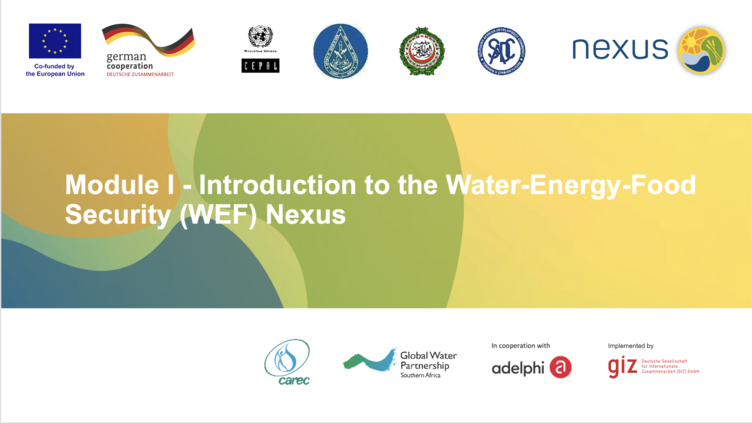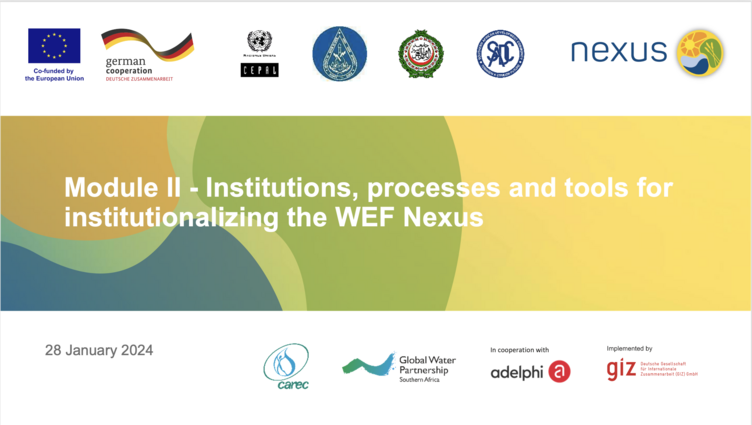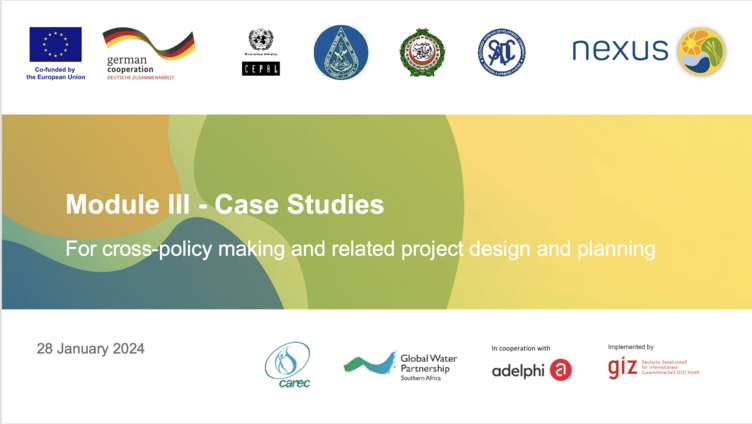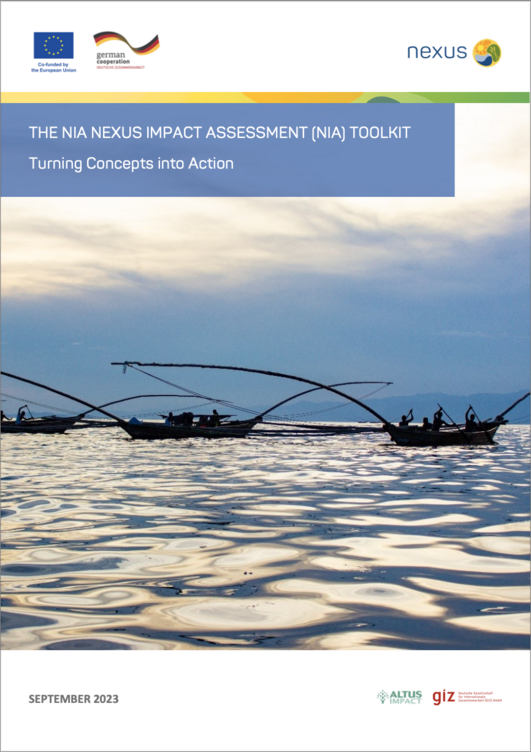Training Material & Tools
Water-Energy-Food Nexus training material
The WEF Nexus training material consists of theoretical and very hands-on knowledge, such as concrete case studies and the presentation of decision-support tools. It is made up of three different modules that can be used individually, together, or mixed and matched according to specific knowledge levels and needs of the target group.
It also includes a Trainer´s Manual, offering a structured guideline on how to plan and conduct the WEF Nexus training as well as additional information, literature and online sources referring to the WEF Nexus approach and the available techniques to conduct interactive training seminars.
Module I: Introduction to the Water-Energy-Food Security (WEF) Nexus
The first module aims at raising awareness on the interconnectedness of that water, energy and food sectors are closely interlinked and on how interventions in one can create negative externalities in other sectors (trade-offs).
Module II: Nexus for cross-policy making and WEF Nexus institutionalisation
The second module highlights the necessity of addressing WEF Nexus trade-offs and synergies for cross-sectoral policy making across different levels/ scales to maximize synergies. The participants of the ToTs will learn about possible ways of anchoring Nexus processes and how to use and apply Nexus assessment tools. It also provides knowledge about cross-sectoral investment planning and financing. In detail, module II includes the following chapters:
Module III: Case Studies: For cross-policy making and related project design and planning
Case studies are a powerful tool to illustrate how the Nexus is operationalised (what it looks like in practice). They help shed light on the benefits of Nexus projects as well as the challenges and solutions for implementing the nexus approach in governance systems and projects. The third module therefore presents specific Nexus experiences and examples of the five target regions as well as additional examples from Europe and Germany.
NIA Toolkit
The NIA Toolkit provides a comprehensive methodology and user-friendly tools to quantify cross-sectoral benefits in qualitative and quantitative/monetary terms (added value). It consists of four main tools, each providing a valuable contribution to the transition from ‘Nexus thinking’ to ‘Nexus doing’. The application of the toolkit is unrestricted and can therefore be applied in a variety of contexts, for example to raise awareness of the benefits of the WEF Nexus and sustainable resource management among project developers, by assisting them in project planning and implementation, or by attracting the interest of public and private donors. The tools can be used together as well as separately and enable professionals to evaluate and measure the impacts of Nexus projects, ensuring compliance with social and environmental safeguards.





